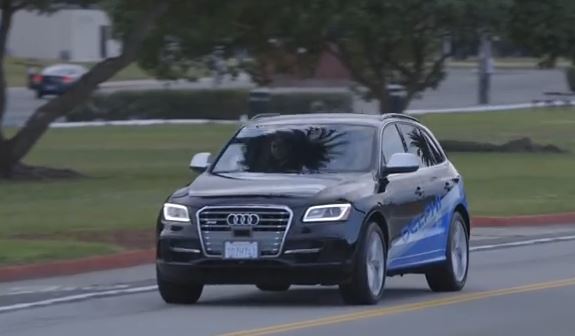
Autonomous Car Travels Across US
April 7, 2015
In the first trip of its kind, an autonomous car recently completed a cross country trip from California to New York. The Audi SQ5, modified by Delphi, an automotive supplier, set the record for autonomous vehicles by traveling 3.400 miles in nine days.
While Google and others have been openly developing autonomous vehicles, for several years, Delphi had been developing theirs under the radar. Unlike Google, who has plans to build their own autonomous car, Delphi, who manufactures parts for cars, is hoping to develop a system that can fit into any production model.
The trip was designed more for gathering data on the capabilities of their autonomous system and the engineers said they gathered nearly three terabytes of data on the trip. However, the journey also served as a marketing tool because the destination was the New York International Auto Show where they hoped to showcase the vehicle.
Delphi’s autonomous car differed from the Google vehicle in that it doesn’t have a spinning radar mounted on top of the vehicle. Instead, it used Lidar (laser radar) along with long range and short range radar and cameras embedded throughout the vehicle to watch for hazards and maintain a safe distance from other vehicles. The system was designed to fit seamlessly into a vehicle without any of the obvious features of an autonomous car.
The trip was limited to daytime driving and engineers were on board to take over driving if necessary. The engineers did, in fact, take over driving duties in heavy rush hour traffic for the sake of safety. In spite of the engineers taking control at times, Delphi says that the vehicle completed 99 percent of the trip on its own.
The autonomous system is designed, in the words of the engineers, to be boring. The system doesn’t allow the vehicle to speed, it always maintains a safe distance from other vehicles, and merges smoothly from freeway on-ramps into traffic. Although the system doesn’t currently allow right turns on red, that can be changed in the future. A few bugs still have to be worked out. The engineers say that the system has a hard time recognizing something as low and subtle as a speed bump.
Delphi’s system could lead to the introduction of autonomous car systems even earlier than predicted. Unlike the Google car, which has never ventured outside of California, the Delphi system doesn’t rely on Google maps for directions; instead it depends on the cameras and Lidar to allow it to travel on any road under almost any condition.
Read more: We’ve reached our destination!
Image: Courtesy of Delphi Automotive
